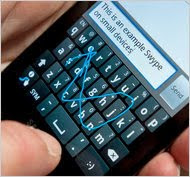Global Wealth Surges
As the financial markets rebounded in 2009 and developing markets continued to grow, lost wealth around the world returned. Despite the volatile global economy, many households gained or regained millionaire status last year, according to a new report by the Boston Consulting Group. The study finds global wealth increased 11.5 percent in 2009, to $111.5 trillion, just short of 2007 levels. When measuring assets under management—cash deposits, money market funds, listed securities, and onshore and offshore assets, but not wealth attributed to investors' own businesses, residences, or luxury goods—the U.S. continued to lead with more than 4.7 million "millionaire households," followed by Japan and China. Singapore, a country with a population of about 5.1 million, had the greatest concentration of millionaire households: 11.4 percent of the country’s total. Wealth may have returned to precrisis levels last year, but confidence has not yet. BCG expects global wealth to grow an average 6 percent annually through 2014, led by robust economies in the Asia-Pacific, but Peter Damisch, a BCG partner and a co-author of the report, says people are still hesitant about investing. Many moved assets from private banks to state-guaranteed retail banks and are still waiting for either new opportunities or new confidence to reinvest, says Damisch.
No. 1: United States
2009 Population: 306.8 million*
2009 number of millionaire households: 4,715,000**
Percentage increase: 15.1 percent YOY**
Share of country’s wealth held by millionaire households: 56 percent**

Even though the U.S. real estate market remained weak, the stock market rebound helped boost the number of millionaire households 15.1 percent in 2009. The U.S. had the most millionaires by far, leading second-in-line Japan by 3,485,000 households. Millionaires represented a fraction of the U.S. population last year but held 56 percent of its wealth, according to Boston Consulting Group.
* Source on all slides: Population Reference Bureau
** Source on all slides: Boston Consulting Group. The year on year change in number of millionaire households was calculated using a constant exchange rate; BCG used yearend 2009 exchange rates to calculate the number of millionaire households in both 2008 and 2009.
No. 2: Japan
Population: 127.6 million
2009 number of millionaire households: 1,230,000
Percentage increase: 5.9 percent YOY
Share of country’s wealth held by millionaire households: 21 percent

The number of millionaire households in Japan grew by a 5.9 percent in 2009. Although No. 3 on the list China tightened the gap with a 30.7 percent increase, Japan still outpaced its developing neighbor by 560,000 households.
No. 3: China
Population: 1,331.4 million
2009 number of millionaire households: 670,000
Percentage increase: 30.7 percent YOY
Share of country’s wealth held by millionaire households: 50 percent

While developed countries struggled through the recession, China’s economy continued to boom, with gross domestic product growing 8.7 percent last year. The surge of commercial activity has created a growing nouveau riche population in China that includes entrepreneurs and investors, although they still represent a tiny fraction of the total population. Seeing opportunities in the growing wealthy demographic, luxury retailers have set up operations in major cities, and high-end real estate is drawing interest—for example, a $30 million house reportedly sold in Shanghai.
No. 4: United Kingdom
Population: 61.8 million
2009 number of millionaire households: 485,000
Percentage increase: 11.5 percent YOY
Share of country’s wealth held by millionaire households: 23 percent

As the financial markets improved, the millionaire population is rebounding in the U.K. Their numbers fell by more than half in the recession, according to a 2009 BBC report. The British Chambers of Commerce said the economy was showing signs of leaving recession in 2009, and gross domestic product ticked up 0.3 percent in this year's first quarter over the previous quarter.
No. 5: Germany
Population: 82 million
2009 number of millionaire households: 430,000
Percentage increase: 23.1 percent YOY
Share of country’s wealth held by millionaire households: 22 percent

Not only have Germany’s rich increased in numbers, apparently some have also heightened their sense of public duty. According to a report by CNBC, a group of German millionaires and billionaires founded a Club of the Wealthy and proposed to Chancellor Angela Merkel that they give 10 percent of their income as a "rich tax" for 10 years to address budget problems.
No. 6: Italy
Population: 60.3 million
2009 number of millionaire households: 300,000
Percentage increase: 7.6 percent YOY
Share of country’s wealth held by millionaire households: 27 percent

Italy’s economy contracted by 5 percent in 2009, but the number of millionaire households grew, and the rich increased their wealth, according to a PricewaterhouseCoopers study. The report shows that the increase in wealth was mostly a result of €85 billion that flowed into the country under an Italian tax amnesty on assets held in offshore accounts.
No. 7: Switzerland
Population: 7.8 million
2009 number of millionaire households: 283,000
Percentage increase: 8.4 percent YOY
Share of country’s wealth held by millionaire households: 44 percent

Switzerland, one of the wealthiest nations by personal income, also has the third-highest concentration of millionaire households—8.4 percent of total households, according to the Boston Consulting Group. In a sign of further strengthening, the Swiss State Secretariat for Economics recently raised its growth forecast for the economy in 2010 to 1.8 percent from 1.4 percent.
No. 8: France
Population: 62.6 million
2009 number of millionaire households: 280,000
Percentage increase: 11.2 percent YOY
Share of country’s wealth held by millionaire households: 19 percent

The French may enjoy high quality of life, but France did not make it into the top five for its number of millionaire households. Its gross domestic product last year dropped 2.2 percent, but the government expects GDP to pick up by 1.4 percent in 2010.
No. 9: Taiwan
Population: 23.1 million
2009 number of millionaire households: 230,000
Percentage increase: 21.1 percent YOY
Share of country’s wealth held by millionaire households: 37 percent

Home to manufacturers and such technology companies as Acer and Asus, Taiwan has a large number of millionaires, who represent 3 percent of total households, according to BCG. The wealthy in Taiwan enjoy a favorable tax regime. According to an article in Commonwealth Magazine on Chinapost.com, eight of Taiwan's 40 wealthiest people paid no taxes in 2005 and 17 paid just 1 percent of their income. The article adds that nearly 30 percent of households in Taiwan do not pay taxes, and many of them earn high incomes.
No. 10: Hong Kong
Population: 7 million
2009 number of millionaire households: 205,000
Percentage increase: 16.2 percent YOY
Share of country’s wealth held by millionaire households: 73 percent

In Hong Kong, 8.8 percent of households are millionaire households—the second-highest concentration in the world after Singapore, according to data from the Boston Consulting Group. Media reports say the stock market recovery and rising property prices in Hong Kong and China helped the richest add billions to their wealth in 2009.
No. 11: Canada
Population: 33.7 million
2009 number of millionaire households: 162,143
Percentage increase: 4.8 percent YOY
Share of country’s wealth held by millionaire households: 20 percent

According to the Boston Consulting Group, millionaire households controlled 20 percent of the wealth in Canada last year. Despite the financial crisis, wealth in the country grew an average of 4 percent from 2007 to 2009 and is expected to continue at that pace for the next five years, according to the study.
No. 12: Belgium
Population: 10.8 million
2009 number of millionaire households: 157,611
Percentage increase: 15 percent YOY

Belgium did not make the top 10 for number of millionaire households, but it did come in eighth for density: 3.5 percent of total households. Despite being a wealthy country, Belgium saw its public debt skyrocket last year, to nearly 100 percent of gross domestic product. The government hopes to balance its books by 2015.
No. 13: Netherlands
Population: 16.5 million
2009 number of millionaire households: 152,434
Percentage increase: 9 percent YOY
Share of country’s wealth held by millionaire households: 22 percent

The number of millionaires in the Netherlands dropped in 2008, reported CapGemini and Merrill Lynch, but made a rebound in 2009. According to Statistics Netherlands, 57 percent of the capital owned by Dutch households that evaporated in 2008 due the financial crisis returned in 2009.
No. 14: Spain
Population: 46.9 million
2009 number of millionaire households: 147,913
Percentage increase: 8.1 percent YOY
Share of country’s wealth held by millionaire households: 26 percent

The number of millionaire households is up, but Spain’s economy has not shown signs of recovery as convincing as other European economies—its gross domestic product increased only 0.1 percent in this year's first quarter, after contracting for six quarters. The European Commission forecasts that the country’s GDP will decline slightly in 2010 as unemployment increases to 19.7 percent.
No. 15: India
Population: 1,171 million
2009 number of millionaire households: 139,835
Percentage increase: 19.7 percent YOY
Share of country’s wealth held by millionaire households: 38 percent

India’s millionaire population, which soared in the boom before the global recession, contracted in 2008, according to Merrill Lynch and CapGemini. GDP growth slowed to 6.7 percent in 2009, but the Asian Development Bank expects the rate to accelerate to 8.2 percent in 2010.
No. 16: Australia
Population: 21.9 million
2009 number of millionaire households: 136,690
Percentage increase: 18.8 percent YOY
Share of country’s wealth held by millionaire households: 20 percent

In 2007, the number of millionaire households in Australia increased to 190,000 from 148,000 a year earlier, reported the Sydney Morning Herald. Levels jumped significantly in 2009, and millionaire households controlled 20 percent of the country’s wealth, according to the Boston Consulting Group.
No. 17: Brazil
Population: 191.5 million
2009 number of millionaire households: 126,882
Percentage increase: 19.2 percent YOY
Share of country’s wealth held by millionaire households: 44 percent

Brazil’s recent economic boom created a new league of wealthy individuals. Millionaire households represented 44 percent of Brazil’s wealth in 2009. After the economy contracted by 0.2 percent last year, it heated up again in the first quarter 2010, growing 9 percent year-on-year, a record pace that exceeded forecasts.
No. 18: Singapore
Population: 5.1 million
2009 number of millionaire households: 122,697
Percentage increase: 35.4 percent YOY
Share of country’s wealth held by millionaire households: 53 percent

The chances of running into a millionaire are high in Singapore, which had the world’s greatest density of millionaires, who represented 11.4 percent of total households in 2009. They controlled 53 percent of the country’s wealth. Singapore’s economy shrank 2.1 percent last year but has improved, growing 13.1 percent year-on-year in the first quarter of 2010.
No. 19: Saudi Arabia
Population: 28.7 million
2009 number of millionaire households: 116,861
Percentage increase: 8 percent YOY
Share of country’s wealth held by millionaire households: 77 percent

The middle class makes up the vast majority of the population in Saudi Arabia, according to a report on gulfnews.com, but BCG research shows that millionaire households controlled 77 percent of the country’s wealth in 2009. Households with $5 million to $10 million of assets controlled the largest share: 46 percent.
No. 20: South Korea
Population: 48.7 million
2009 number of millionaire households: 92,045
Percentage increase: 27.7 percent YOY
Share of country’s wealth held by millionaire households: 19 percent

There were more millionaires in Korea last year compared with 2008. The economy held up through the recession, growing 0.2 percent in 2009. The Bank of Korea expects gross domestic product to expand 5.2 percent in 2010. BCG’s study says millionaires controlled 19 percent of South Korea's wealth last year, while nearly half of the wealth was represented by households worth less than $100,000.




























